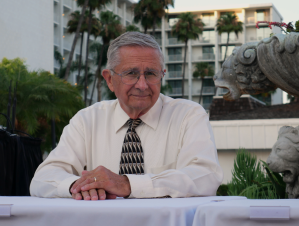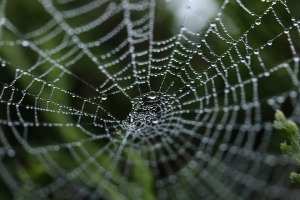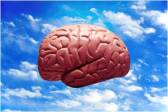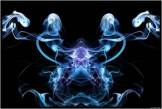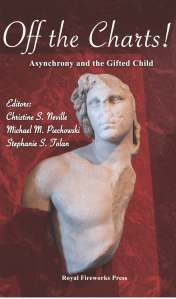In the more than thirty years I have written and spoken about the needs of gifted children and adults, I have shared a lot of my personal life. But after the last piece I wrote for this blog (December 2012) that life began to disintegrate, as did my ability to turn it into anything that would seem helpful to other people. Between April and July of 2013 I lost my husband of 49 years and the oldest two of our four sons.
Shell-shocked, I withdrew from the world except for a few obligations: Yunasa, the Institute for Educational Advancement’s camp for highly gifted kids and speaking as a member of the Columbus Group about Asynchronous Development at the World Council’s Conference in Louisville.
At that conference the argument between those (like the Columbus Group) who focus on giftedness as a developmental process innate to out-of-the-ordinary individuals (the child-centered view) and those who perceive giftedness as achievement leading to success, fame, fortune or eminence (achievement that is at least theoretically possible to anyone willing and able to work hard enough to beat out the competition and collect the rewards) suddenly seemed both especially virulent and especially ludicrous.
As I drove the eight hours home from Louisville, the positions within that argument and my whole history of writing and speaking about the gifted began a kind of slow dance in my mind and heart with the three lives in my family that had just ended. Something fundamental in my way of looking at the culture within which we live, was changing—had changed. It has been many months since then, but it feels as if I may have grasped enough of the change now to share it—I’m still a writer, after all, and this is what I do.
Always before, as I thought and wrote about the needs of gifted children and adults, I envisioned, as maybe most of us do, life stretching out from birth to something akin to infinity. Never mind that all of us claim to know the certainty of death. We tend to be woefully unprepared for its visitation. It shocks us with the cessation of a process we cannot somehow grasp as “finished.” We are left picking up shattered fragments of some picture that there just wasn’t time to complete, trying to decide what its meaning can have been now that it is over—there are no more choices to be made, nothing to add, no new turning or opportunity to watch for. What meaning was there, and how much of that meaning had to do with racking up awards or recognition, financial success or lack of it, children to carry on a name or a family vision? Consider these three lives:
Life Number One
When we were married in 1964 my husband was a professor of theatre with three sons, ages 2, 3 and 4. He was in the process of completing his doctorate and we expected to build a nice, secure future in academia. Six years later, when the structure of the academic world began to constrain his creativity, he left college teaching for the uncertainties and risk of work in the professional theatre. It was amidst those uncertainties that our son, the fourth Tolan male, was born. Over time, through plenty of ups and downs, my husband became well known in the regional theatre world as a director, manager, producer and idea person, and he went on teaching from time to time. Actors tended to love working with him. Though he eventually retired from both directing and teaching, the young actors he had worked with in his early years still regularly appear—as senior citizens now, of course—in television, film and theatre. At his memorial service many people (both actors and former students) told of how his faith in them, his ability to spot, encourage and trust innate talent, and his passion for sharing his love of theatre had helped to shape their careers.
Life Number Two
The first born son was a clear example from early childhood of the gifted, hard-working, disciplined and organized achiever. With a clear view of what he wanted in life, he moved steadily and successfully through his many years of education, took on the financial burden of a superior medical school, studied abroad, and became an eminent pediatric infectious disease specialist, researcher and educator, widely known and steadily published in the major journals. He was brilliant, but also caring enough to give his cell phone number to the families of his patients and to his colleagues alike. His much sought-after advice was available 24/7. When he suffered a sudden cardiac arrest in July at the age of 52, he was working at three hospitals and well on his way to being nationally recognized as one of the clear leaders in his field. The often repeated message delivered at his memorial was that it would take many individual doctors now to fill the gap his death had left in his field.
Life Number Three
The second son (age 51 when he succumbed to esophageal cancer in April) was a caring “people person,” who seemed, from earliest childhood, “allergic” to competition. Always available to lend a hand to someone in need, or to rescue an animal and provide it a home, he majored in Religious Studies and Political Science at Indiana University. While working in food service during high school, he had discovered a love for cooking, and after college (following his father’s example of daring to follow a dream that did not guarantee either financial or job security) opened a restaurant—a time he often said was the happiest in his life, cooking good food for hungry and appreciative people. After an economic downturn that resulted in his restaurant’s closing, though he found a variety of ways to be of service, he never managed to get a handle on worldly success, let alone fame or fortune. A cousin, however, once called him the kindest person she had ever met. In the varied work he did over his lifetime he was loved and admired by the people whose lives he touched.
What would the argument about innate gifts vs. worldly accomplishment have to say about these three lives? All three showed the sort of asynchronous development typical of the gifted in the Columbus Group frame of reference. But which of them would the world have recognized as gifted? And which of them would claim the term for themselves?
I ask now, what, finally, does it matter? Life matters. Individuals, in all their complexity, matter.
As for whether a person, looking back on his life, would consider himself a “success,” no one else could possibly know. For everyone life is a series of peaks and valleys. What looks like a valley of failure from the outside might be felt as one of life’s greatest successes once survived and moved through. And some of the peaks of success as viewed from the outside might have felt barren and meaningless once achieved. Achieving “success” must finally have to do with the individual’s own goals, wishes, dreams, visions and passions.
I recently sent a message to Scott Barry Kaufman, author of UnGifted (a book with two subtitles: “Intelligence Redefined” and “The Truth about Talent, Practice, Creativity, and the Many Paths to Greatness”) to congratulate him on the book and tell him that I think his definition of intelligence, is the best and most inclusive I’ve ever seen. But that second subtitle takes me back to the cultural worldview that 2013 shattered for me irrevocably. “Paths to Greatness.” Hiding there is that cultural sense that an individual’s worth has to do with finding a path to recognizable achievement: greatness. It is not just that we think of ourselves as “human doings” rather than “human beings,” it is that we want or expect ourselves and those we care about to do something others would recognize as “great.”
We’ve all heard the saying that life is a journey, not a destination. And yet how many of us live each day of our own lives as if that were true, looking for meaning and joy in the steps of the journey, open to our own loves and passions, trusting that whatever someone else may say of us, however someone else judges us, we both know and value who we are in ourselves?
And which way of looking at life are we sharing with the children we live or work with?
When Guiding the Gifted Child was published way back in 1982, it included the poem “Desiderata” by Max Ehrmann. (I don’t remember for sure, but suspect it was Betty Meckstroth’s idea to include it.) A bit of that poem is what I want to share here: “You are a child of the Universe, no less than the trees and the stars; you have a right to be here.”
If we are to have something truly worthwhile to offer children, it seems to me it needs to be not just child-centered (yes, we need to see them as who they are, not who we expect them to be or become), but life-centered. We humans have vast individual differences, which is, arguably, how we have survived on this planet as long we have. As I said at the end of my cheetah piece all those years ago, life here operates on the principle of bio-diversity. Every difference has a place. Every life has meaning. Every life.
Will it be a meaning the children themselves will be able to recognize and value? Are we supporting them in that? Do we even know how to support them in that?
I suspect it has to start with the assurance that each of them has a right to be here, has a value to the larger story of humanity on Earth, no matter how like or unlike others they feel they are, whether they feel they fit or not, and no matter how long or short their time here may be. They surely need to see themselves as the hero of their own story. They have an innate right to make their own meaning of it, starting with who they are and what they love. What they do with that should grow from it, not be imposed from outside, or chosen to provide some external proof of their worth.
What can any other success or label, fame or fortune offer? If their story should end tomorrow, what will it have meant?
Tags: Change, Columbus Group, Definitions, gifted children, Giftedness, Individuality, Scott Barry Kaufman



